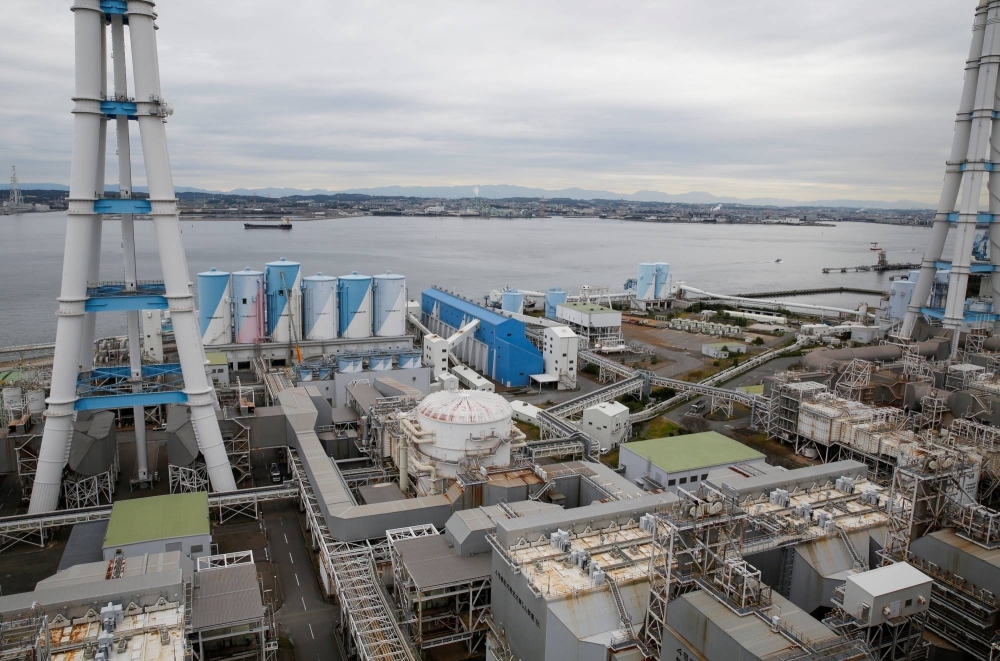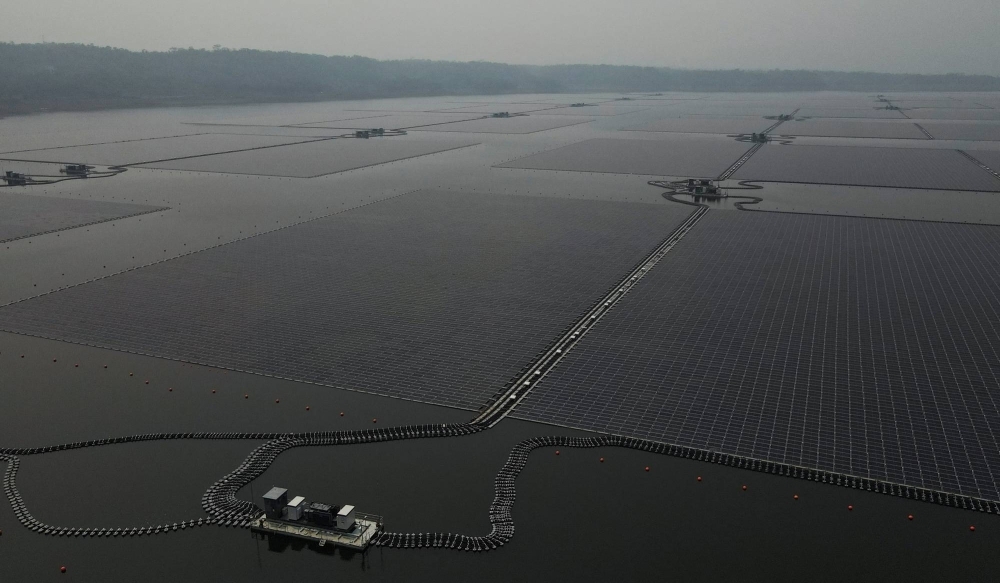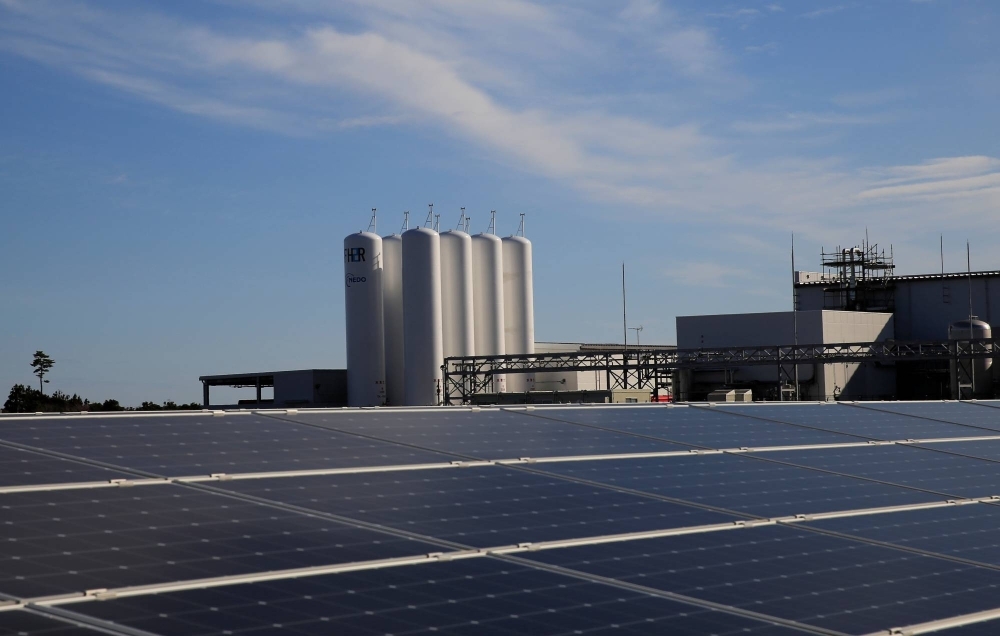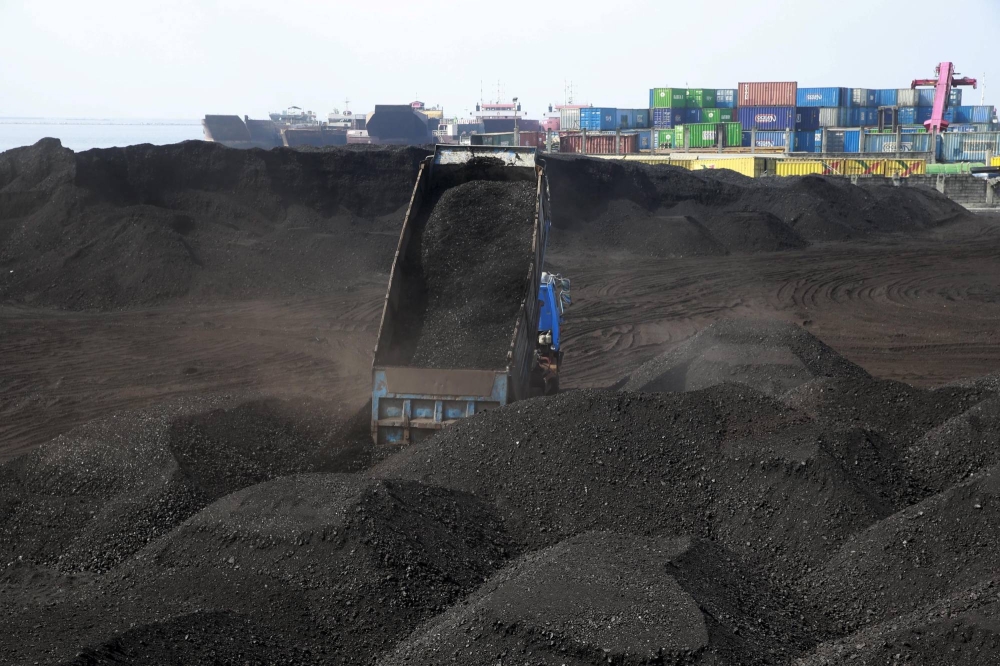Before the dust has even settled on key COP28 climate talks in the United Arab Emirates, Japan will host the first summit later this month on a zero carbon emission framework with Australia and Southeast Asian nations in Tokyo.
Taking place as Japan’s Group of Seven presidency ends, it’s perhaps a final opportunity for Prime Minister Fumio Kishida to demonstrate strong global leadership on climate and energy issues. The early indications show, however, that the discussion will focus not on expanding proven solutions like solar, wind and energy storage, but instead untested technologies being pushed by major Japanese companies.
For Asia, the continent now responsible for a majority of global greenhouse gas emissions due to rapid economic growth over the past two decades, achieving net zero likely means rapidly growing renewable energy and shifting away from fossil fuels. But, according to the Japanese government, much of the region lacks adequate solar and wind energy resources compared with Europe or North America, and Tokyo is instead pushing alternative — and in some cases, unproven — technologies such as carbon capture and storage (CCS), biomass and ammonia/hydrogen co-firing.
Independent projections paint a different picture, showing ample offshore wind potential, untapped geothermal possibilities and plenty of room for distributed solar to grow in both Japan and Southeast Asia, with the key issues being grid connectivity and transmission capacity, not renewable resources. Yet these analyses often fall on deaf ears partly due to policy — and financing — from Japan.
“Japan’s choices permeate throughout … infrastructure spending across the region,” says Jacqueline Yujia Tao, Southeast Asia lead analyst at the nonprofit Transition Zero. “Japanese energy choices often reflect the decisions that Southeast Asia markets make.”

Prime Minster Fumio Kishida arrives for the ASEAN-Japan Summit in Jakarta in September. Kishida is set to host ASEAN leaders for an energy transition summit later in December.
| Reuters
Asia and renewables
At news conferences, in reports and at events such as the recent Task Force on Climate-Related Financial Disclosures summit in Tokyo, or the Asia CCUS Network meeting in Hiroshima in September that focused on carbon capture, utilization and storage, officials and government-linked think tanks regularly claim a lack of renewable resources is a key reason that Japan can’t follow its G7 peers on clean energy. Instead, they say, it must still rely on fossil fuels or unproven technologies like ammonia co-firing and hydrogen.
Much of that argument uses research commissioned by or conducted by the Ministry of Economy, Trade, and Industry. For example, a February 2022 Transition Roadmap for Power Sector, released by METI’s Agency for Natural Resources and Energy, argues that Japan only has one-eighth the amount of suitable locations for offshore wind compared with the United Kingdom.
The same report says that Japan has far fewer areas with sufficient wind speeds than Germany, meaning the “large-scale introduction of low-cost onshore wind power generation is difficult to promote.”
Similarly, solar energy is limited by Japan’s lack of flat landscapes, which the report argues is half that of Germany, posing a challenge for “securing appropriate sites and implementing projects in harmony with the local community.”
Instead, METI is pushing what it calls “zero-emission thermal energy,” supporting the expansion of ammonia co-firing in coal-fired power plants, along with CCS and biomass. While offshore wind and solar are part of the government’s plans, they are notably lacking in ambition compared with other G7 countries. At COP28, Europe and the United States are seeking to finalize an agreement to triple renewables by 2050, a plan that Japan appears to be ready to sign off on even as it continues to make plans for coal co-firing.
According to Monica Nagashima, Japan director at the nonprofit Influence Map, lobbying is one factor behind the discrepancy in ambition between Japan and its G7 peers.
“The heavy industry sector has been very active in promoting these technologies as so-called low carbon solutions, advocating for increased funding, research and development, and policy support,” Nagashima says.

JERA’s Hekinan thermal power station in Aichi Prefecture in 2021, where plans are in place to co-fire coal with ammonia.
| Reuters
When it comes to Southeast Asia, the arguments are the same. METI-led efforts like the Asia Zero Emissions Community (AZEC) and the Asia CCUS Network argue that renewables alone can’t meet Southeast Asia’s energy needs.
“We must not overlook the importance of transition fuels like natural gas, and transition technologies like CCUS, which can play a role in the pursuit of carbon neutrality in Asia by 2050,” METI minister Yasutoshi Nishimura said at the Asia CCUS Network event in Hiroshima. “A multitude of pathways must be used to reach carbon neutrality.”
One of the most prominent groups in this space is the Economic Research Institute for East Asia and ASEAN (ERIA), based in Jakarta, whose main funder is METI. ERIA plays a key role in organizing Asia CCUS Network and AZEC events in Southeast Asia, and is a participant in panels at METI-led conferences in Japan, too.
AZEC and METI’s Agency for Natural Resources and Energy did not respond to interview requests.
In a recent study on Japan’s climate and energy policy, professors Hiroshi Ohta at Waseda University and Brenden Barett at Osaka University theorize on why Japan has repeatedly failed to take a leadership role around climate change and the energy transition, arguing that “the predictability of Japan’s climate/energy policy making, has been the fact that the dominant (energy, manufacturing and transport industries’) vested interests around nuclear power and fossil fuels have generally won out and slowed the pace of renewable energy transition.”
Business interests also appear to be central to the government’s climate diplomacy strategy. Japanese companies have lagged Europe, the U.S. and China in developing technologies for electric vehicles, solar panels and wind turbines. The technologies that AZEC and the Asia CCUS Network are proposing are ones that Japanese companies like JERA, IHI and Mitsui are also pushing for: namely CCS, co-firing and hydrogen.
“METI significantly undervalues the renewable energy potential of Southeast Asia,” said Teruyuki Ohno, executive director of the Tokyo-based Renewable Energy Institute. “The promotion of CCS is a mistaken business strategy.”

A massive floating solar power plant built in Purwakarta, Indonesia, in November. A report from the International Renewable Energy Agency has found that there’s more than enough wind, solar, hydro and geothermal resources to power all of Southeast Asia.
| Reuters
A different picture
The estimates put out by METI are the basis by which groups like ERIA and the Tokyo-based Institute for Energy Economics Japan (IEEJ) argue for not only CCS and co-firing, but also nuclear energy.
“Japan is not endowed with favorable wind, and that’s a challenge,” said IEEJ CEO Tatsuya Terazawa. IEEJ argues that, in Japan and much of Asia, relying on renewables for decarbonization is not enough.
For solar, land is the main challenge.
“Japan is a small island country, and 70% of our land consists of mountains, and flat land tends to be more ideal for solar,” Terazawa said. “This will be a challenge for the further expansion of solar panels in the future.”
But other nonprofit and academic research reveals a far different picture.
A report released last year by Berkeley National Laboratory in California estimated that Japan could achieve a 90% clean electricity share by 2035 from the expansion of solar, wind and battery storage alone, far above the government’s target of between 36% and 38% for renewables by 2030.
Similarly, a separate report published in Energy Conservation and Management last year, found that Japan could “produce all of its electricity from wind and solar for $86/110 MWh (megawatt hours), which is competitive with current market prices.” They also estimated floating offshore wind alone could generate 50 times more electricity than Japan’s entire current demand.

Prime Minister Fumio Kishida speaks at an ASEAN summit in Phnom Penh in 2022.
| Reuters
ASEAN Summit in Phnom Penh
And a July report by BloombergNEF concluded that Japan could achieve its 2050 net-zero goal and strengthen its energy security “without the need to rely on costly technologies, such as ammonia coal co-firing.”
In short, “Japan has more than enough renewable energy to power its economy,” Transition Zero’s Tao said.
The same is true for Southeast Asia, according to a report from the International Renewable Energy Agency (IRENA), which found that there’s more than enough wind, solar, hydro and geothermal resources to power the entire region, with renewables dominating electricity generation under all of the scenarios it modeled. A lot more, in fact, according to a more recent report from the Renewable Energy Institute, which estimated that Southeast Asia has more than 40 to 50 times the renewable energy potential compared with current electricity demand.
There are challenges — from building adequate energy storage to managing the intermittency of wind and solar and securing greater investments in grid infrastructure. This is an issue in Japan, too, as the current grid cannot adequately transport energy from regions like Akita Prefecture and Hokkaido, where offshore wind resources are high, to major centers like Tokyo and Osaka.
Incentives to promote rooftop and distributed solar, like the recent plan put in place by the Tokyo Metropolitan Government, are also needed given Japan’s lack of space for mega-solar projects.
The general outlook for carbon capture, utilization and storage is also not promising. While the International Energy Agency (IEA) noted in its 2023 Net Zero Roadmap that this is an “important technology” in areas where there are limited options for reducing or eliminating emissions, “Progress has been slow and deployment relatively flat for years. … This lack of progress has led to progressive downward revisions in the role of CCUS in climate mitigation scenarios,” including for the latest projected net zero emissions scenario.

The Fukushima Hydrogen Energy Research Field and an adjoining solar power farm in Namie, Fukushima Prefecture, in 2021
| Reuters
Japan’s impact
Despite this, the upcoming summit in Tokyo appears as though it will focus on co-firing, CCS, hydrogen and natural gas — ignoring the growing evidence that renewables can be a solution for Japan and Southeast Asia to decarbonize.
The stakes are clear: Southeast Asia — a region of nearly 600 million people — is expected to see energy consumption rise by 80% between now and 2050, according to the IEA. Whether that comes with an accompanying rise in greenhouse emissions depends on what technologies fill future demand.
Japan’s role is paramount, with the rapid growth in coal-fired power generation since 2000 having been driven partly by Japanese investment, which ceased in 2021 as Tokyo joined its G7 peers in halting such investments. Moreover, as the largest investor in the region, Japan will play a key role in deciding what energy choices countries like Indonesia and the Philippines make going forward.
For Evan Gach, program coordinator at the Japanese nonprofit Kiko Network, METI — and Japan — need to shift direction.
“Whether you’re looking at it from an economic, environmental or social perspective, recent analyses all highlight that renewables clearly provide the most benefit as the basis of a just energy transition in Japan and throughout Asia,” Gach said.

